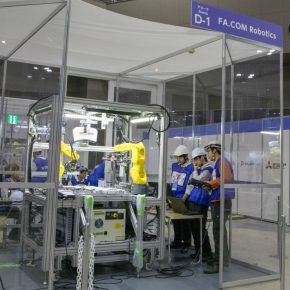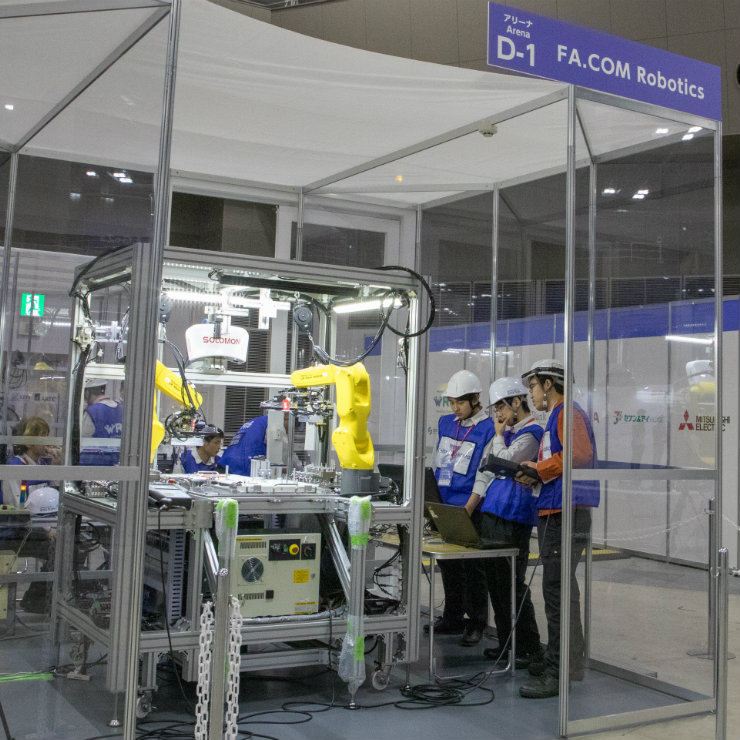
(Hiroko Tadokoro, Public domain)
“Growth prospects in CSE have attracted major robotics vendors and integrators,” said Ina Malatinska, IDC CEE lead for robotics technology research. According to a 2017 Eurobarometer poll, the majority of respondents were concerned about the impact of robots and artificial intelligence on employment: 74 per cent expect more jobs to be lost to robots and artificial intelligence than will be created; 72 per cent believe robots steal peoples’ jobs; and 44 per cent of those who are currently working thought their current job could at least partly be done by a robot or artificial intelligence. In the survey, 38 per cent of Hungarians are against automation, one of the highest percentages in Europe.
“In Hungary today, everyone who wants a job can get one. Automation is the only way of remaining competitive and it also helps to shift labour to less monotonous and less hazardous jobs,” Péter Galambos, director at the Antal Bejczy Centre for Intelligent Robotics told Emerging Europe. “At the same time, this implies a shift in education, but this is a mid-long term process. The government should invest in the education of people and explain the macro benefits of automation,” he added.
“The more people understand the potential benefits of automation the more they will support the concept,” comments Daniel Sirman, executive manager industry at the robotics company ABB in Romania. “What this technology means is that the types of jobs that people do will evolve over time (as they always have), jobs won’t necessarily be reduced. It’s worth noting that the countries in the world with the highest level of industrial robots per person do not have unemployment issues. Also, the trend in automation at the moment is towards collaborative robotics, where robots work alongside people, in a truly collaborative environment. Carefully managed, automation represents a great opportunity for people,” he told Emerging Europe.
ABB’s latest automation solution is in the foundry industry, where robots are employed to pick up casts from casting machines. A solution that increases productivity, quality and safety.
Labor shortage
Many CSE’s factories are already well automated. New robot installations in the Czech Republic rose 40 per cent between 2010 and 2015, according to the International Federation of Robotics. Today, there are around 101 robots for every 10,000 workers. Slovenia, with 137 units, ranks the 16th in the world, immediately followed by Slovakia with 135 units per 10,000 workers.
“Automation arrives at an opportune time for Hungary to achieve long-term productivity improvements that are indispensable to its economic competitiveness and ability to sustain growth. The immediate benefit of automation will be to reduce the growing labor shortage that is creating a bottleneck to economic growth,” McKinsey wrote about Hungary in its latest automation report.
Not only automotive sector
The sector which is currently best suited for automation is automotive. But it is not the only one. According to ABB Romania, the general industry segment (such as companies producing metal parts, that use robots for activities such as arc welding and spot welding) are ripe for automation.
“There are traditionally highly automated sectors, such as the food production and packaging industry. However, these sectors are automated through so-called rigid automation methods. Today, other sectors are getting increasingly automated, such as manufacturing (metal casting, inject molding, assembling), as well as the baking industry. I must also mention intra-logistics in every corner of the economy. Autonomous logistics vehicles have appeared in many companies recently and the trend is increasing,” Galambos said and added that “The most crucial issue is the limited availability of human resources. SMEs and corporate businesses are facing a lack of people eligible for quality work at a reasonable price. Therefore, sectors that are traditionally relying on manual work have begun investing in the robotization of their processes.”
As global shipments of industrial robots reaches a record high of 381,000 last year, the pace of growth in the CSE market outstripped almost all of the rest of the world in the uptake of robots, data from the International Federation of Robotics (IFR) shows.
Companies are increasingly investing into industrial robots to stay competitive, which has become a priority in the CSE region, especially in the fast growing Visegrad 4 (V4) economies (Czech Republic, Hungary, Poland and Slovakia). Robots are the answer to growing labor shortages in Central Europa that is already driving up wages and increasing inflationary pressure that is threatening Central Europe’s competitiveness. Firms in the region are struggling to find workers with the skills they need.
Even after attracting millions of migrant workers from abroad, especially from Ukraine, Central Europe has only partially eased the pressure and investments into industrial robots are expected to continue to rise in the longer-term.
A considerable increase in robot sales has already been seen across the CSE region, the report says, with the exceptions of Romania and Slovakia — the latter somewhat surprisingly given the importance of its auto manufacturing industry, which internationally has emerged as the top investor into robots.
The latest World Robotics Report shows that shipments to the region increased by 35 per cent compared to global growth of 30 per cent last year. The rise in shipments of industrial robots to the CSE region is expected to continue going strong at 28 per cent in 2018, compared to just 10 per cent globally, followed by a compound annual growth rate (CAGR) of 22 per cent between 2019 and 2021 (CAGR of 14 per cent worldwide).
In absolute terms, the CSE market will remain small compared to those in China, the world’s largest market with 290,000 robots — three times as many as all of Europe combined — projected to be shipped in 2021. Also among the top 5 markets worldwide are Japan, South Korea, the US and Germany. The value of the market has already reached USD16.2bn of robots shipped in 2017, up 21 per cent y/y and is showing no signs of slowing down.


